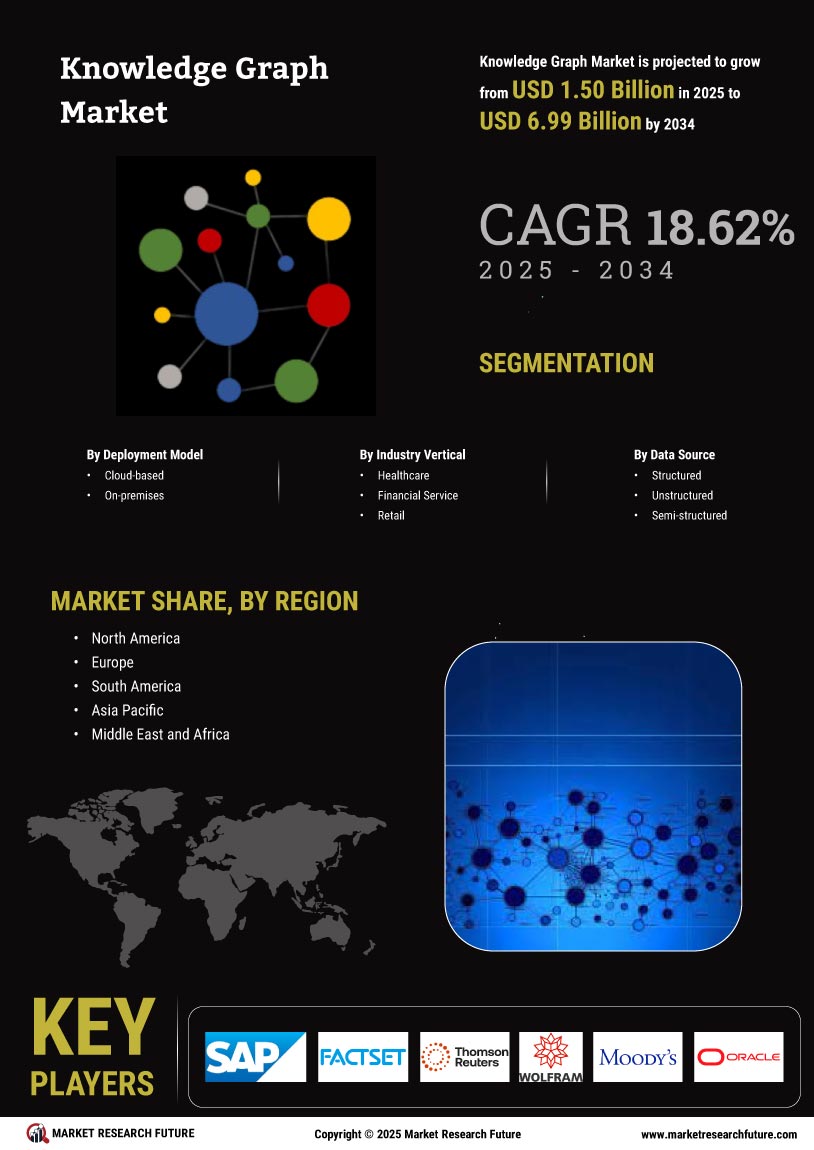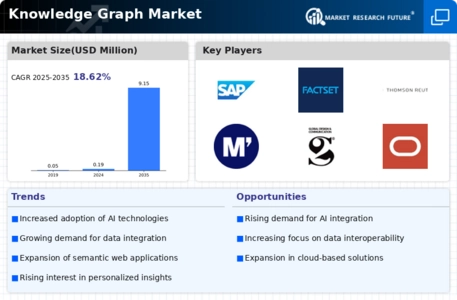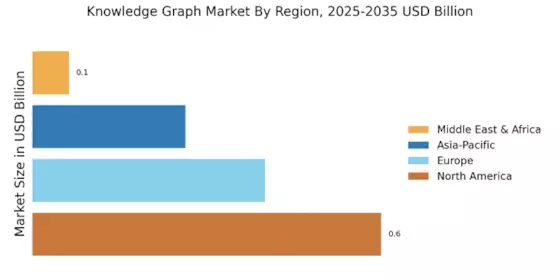Increased Focus on Semantic Search
The Knowledge Graph Market is witnessing an increased focus on semantic search capabilities. As search engines and applications evolve, there is a growing need for more contextually relevant search results. Knowledge graphs play a pivotal role in this transformation by enabling semantic search, which goes beyond keyword matching to understand the intent behind queries. This shift is particularly important in sectors such as e-commerce and information retrieval, where user satisfaction is paramount. Market analysis indicates that the semantic search segment is expected to grow significantly, driven by the demand for enhanced search experiences. Organizations are thus investing in knowledge graph technologies to improve their search functionalities, ultimately leading to better customer engagement and retention.
Rising Demand for Data-Driven Insights
The Knowledge Graph Market is experiencing a notable surge in demand for data-driven insights. Organizations across various sectors are increasingly recognizing the value of leveraging knowledge graphs to enhance decision-making processes. According to recent data, the market is projected to grow at a compound annual growth rate of approximately 25% over the next five years. This growth is driven by the need for businesses to extract actionable insights from vast amounts of data. Knowledge graphs facilitate this by providing a structured representation of information, enabling organizations to uncover relationships and patterns that may not be immediately apparent. As companies strive to remain competitive, the adoption of knowledge graphs is likely to become a critical component of their data strategy.
Advancements in Natural Language Processing
Advancements in natural language processing (NLP) are significantly influencing the Knowledge Graph Market. The integration of NLP technologies allows for more intuitive interactions with knowledge graphs, enabling users to query and retrieve information in a more human-like manner. This trend is particularly relevant as organizations seek to improve user experience and accessibility to complex data sets. The market for NLP is expected to reach several billion dollars by 2026, indicating a robust growth trajectory. As NLP capabilities continue to evolve, they are likely to enhance the functionality of knowledge graphs, making them more versatile and user-friendly. Consequently, organizations are increasingly investing in knowledge graph solutions that incorporate advanced NLP features to streamline data access and analysis.
Growing Importance of Data Governance and Compliance
The growing importance of data governance and compliance is significantly impacting the Knowledge Graph Market. As organizations face increasing regulatory pressures regarding data management and privacy, the need for robust data governance frameworks has become paramount. Knowledge graphs facilitate better data governance by providing a clear structure and lineage of data, which is essential for compliance with regulations such as GDPR and CCPA. The market for data governance solutions is projected to expand rapidly, reflecting the heightened focus on data integrity and security. Consequently, organizations are turning to knowledge graph technologies to enhance their data governance strategies, ensuring that they not only comply with regulations but also leverage their data assets effectively.
Integration of Knowledge Graphs with Business Intelligence Tools
The integration of knowledge graphs with business intelligence (BI) tools is emerging as a key driver in the Knowledge Graph Market. Organizations are increasingly seeking to combine the analytical capabilities of BI tools with the contextual insights provided by knowledge graphs. This integration allows for more comprehensive data analysis and visualization, enabling businesses to make informed decisions based on a holistic view of their data landscape. Recent studies suggest that the market for BI tools is expected to grow substantially, with knowledge graphs enhancing their effectiveness. As companies strive to harness the full potential of their data, the synergy between knowledge graphs and BI tools is likely to become a focal point for innovation and investment.


















Leave a Comment